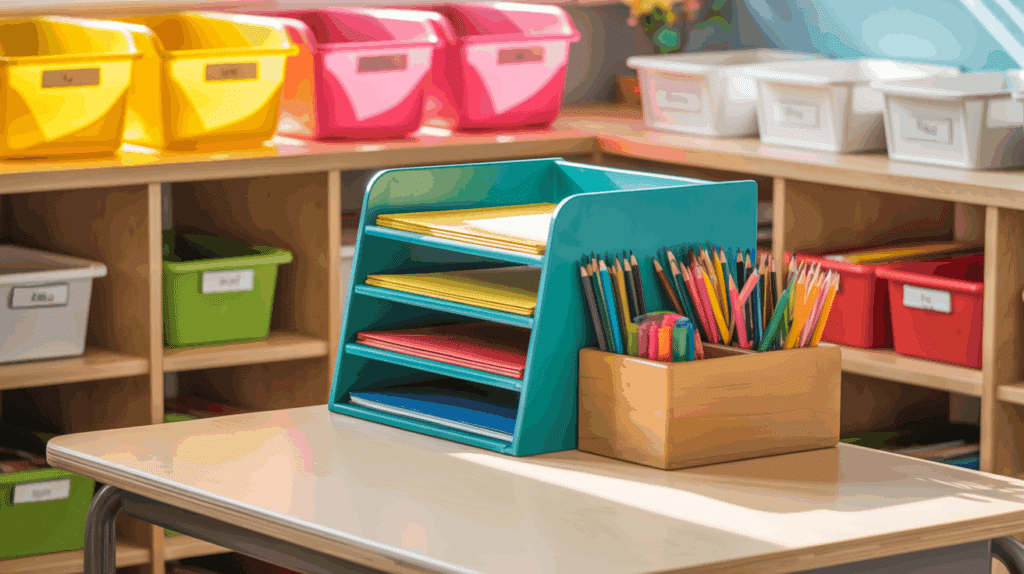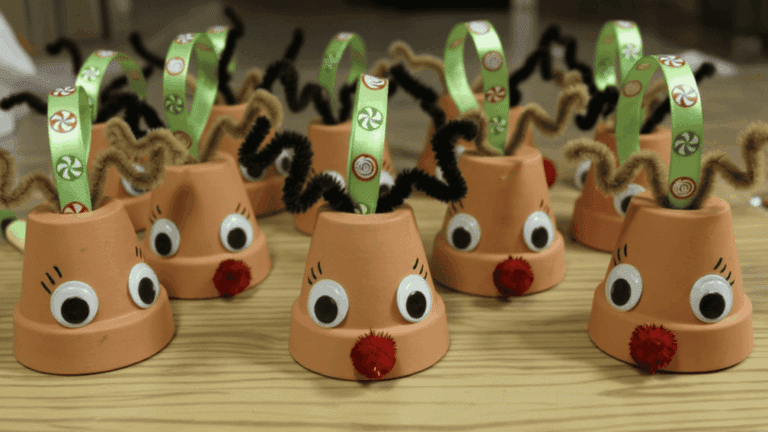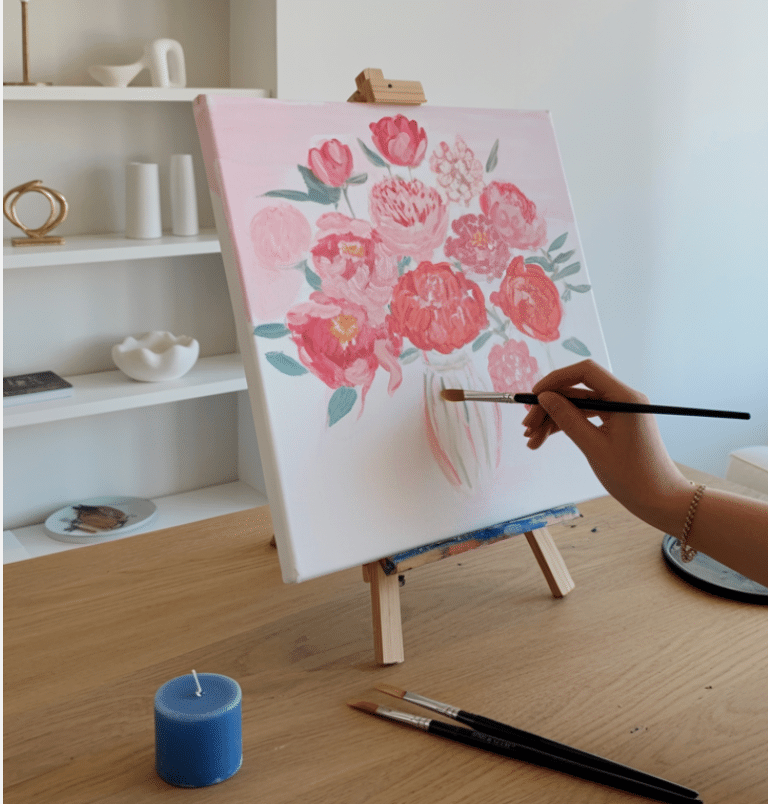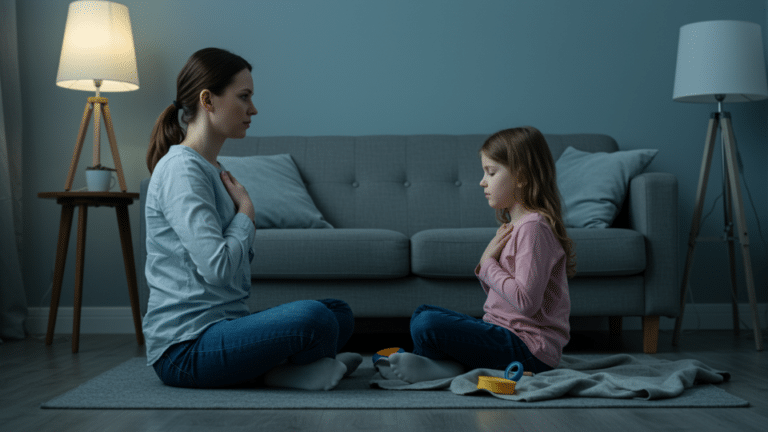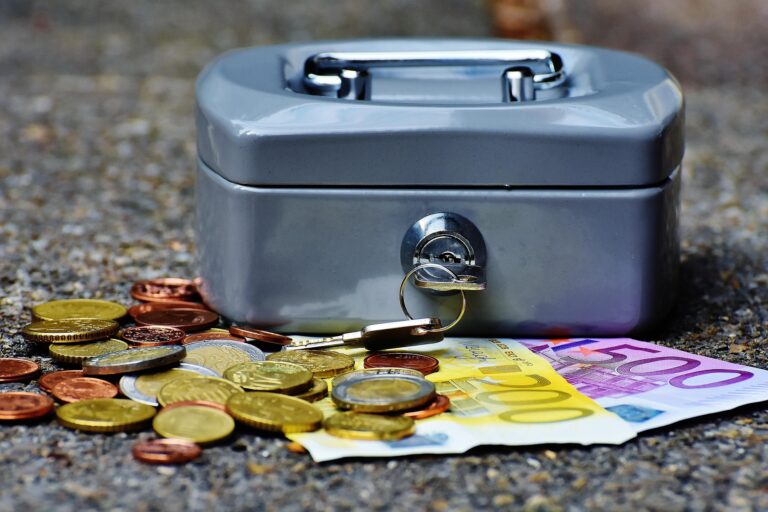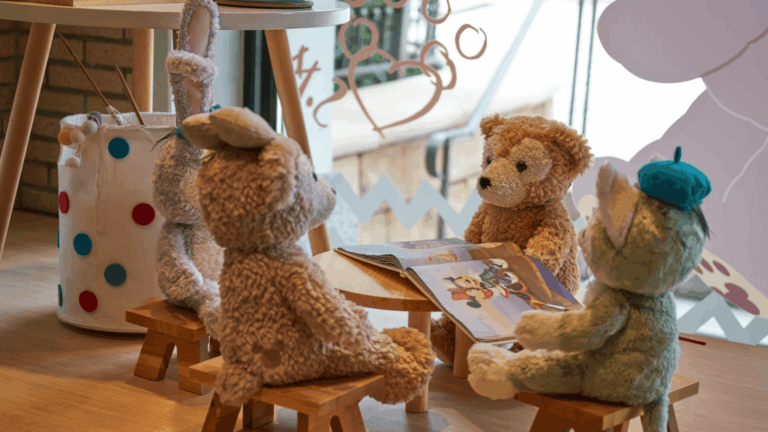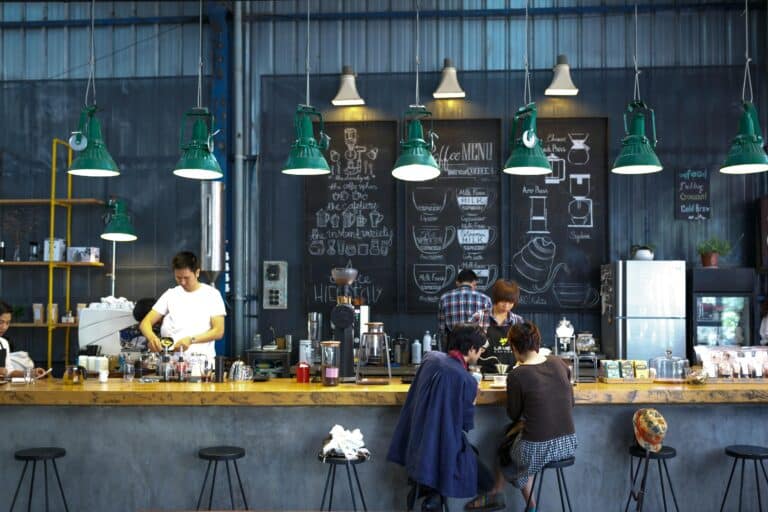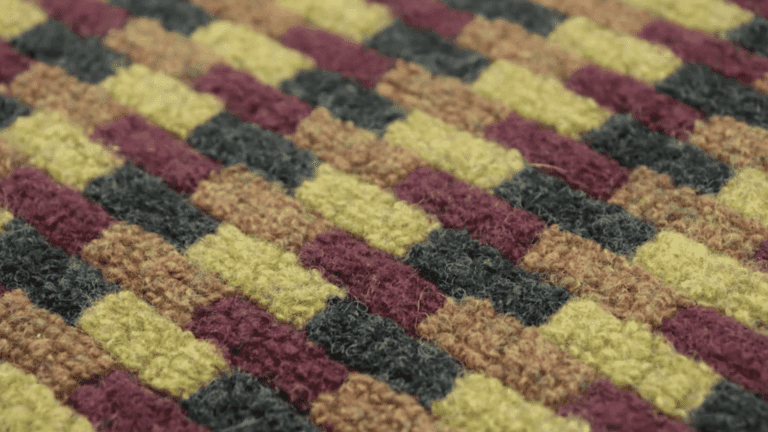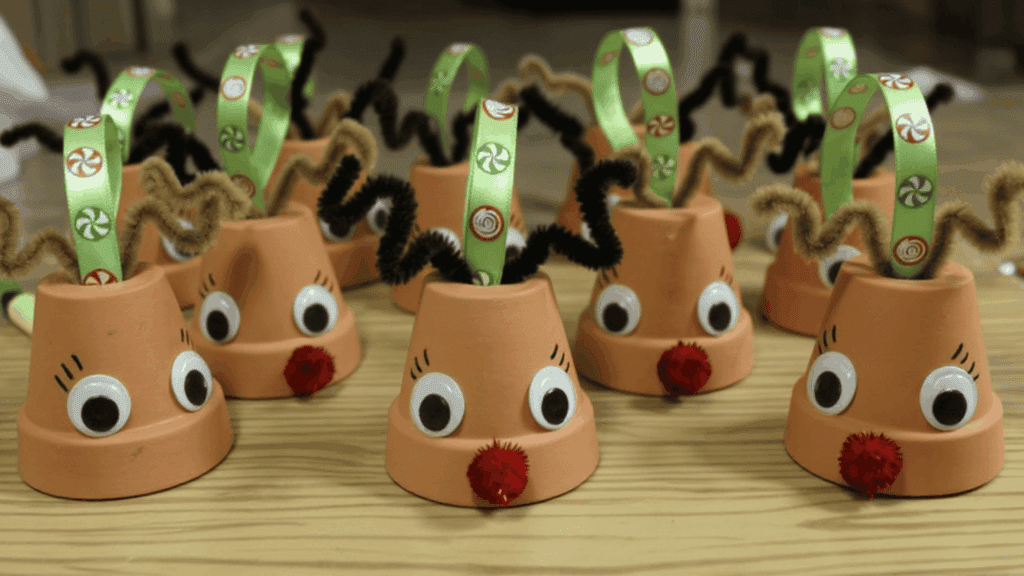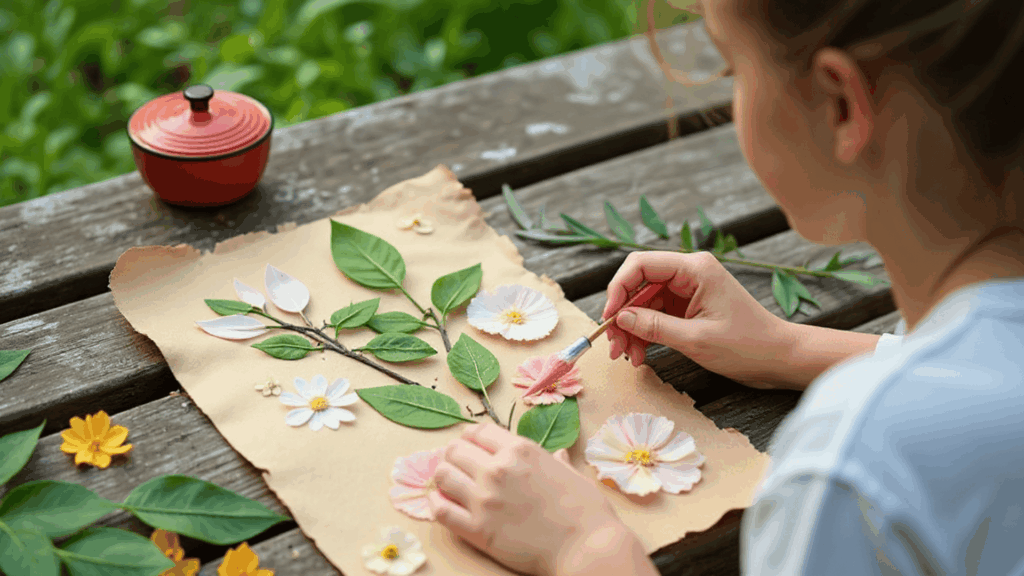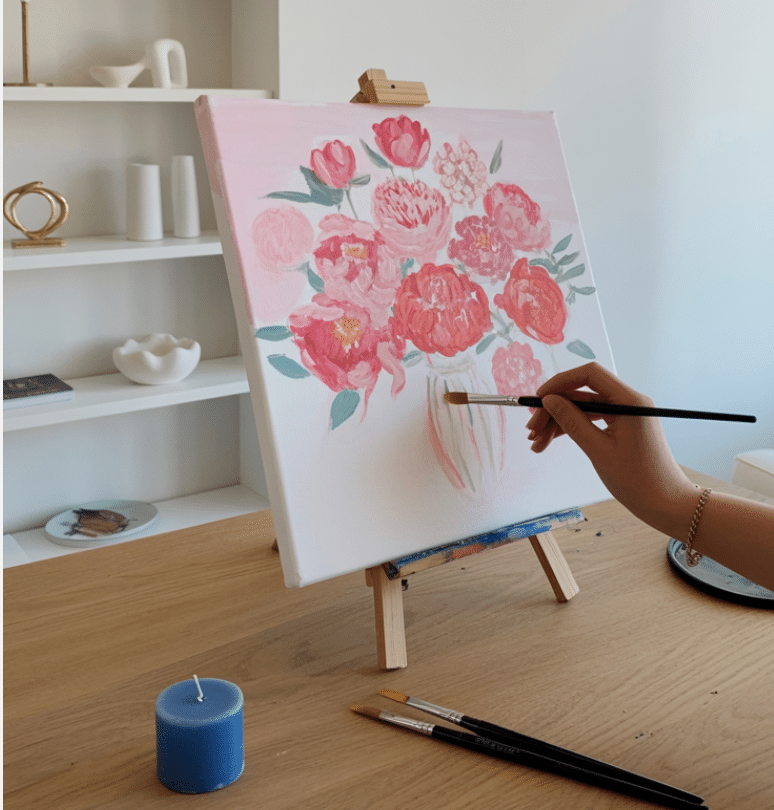Every teacher knows that sinking feeling when students can’t find supplies, papers pile up everywhere, and learning time gets lost in the chaos.
Sound familiar? Teachers spend countless hours searching for materials instead of focusing on what matters most – teaching. Smart classroom organization ideas can change everything.
This blog will show teachers practical and creative ways to set up their learning spaces for maximum efficiency.
From storage solutions to student-friendly systems, these ideas will help create classrooms where both teachers and students grow.
Why Classroom Organization Impacts Learning?
Research shows that organized classrooms directly boost student performance and focus. When students walk into a well-structured space, their brains can concentrate better on learning tasks.
Visual clutter creates mental fatigue; it’s like background noise that never stops. Scientists found that messy environments make it harder for children to process information and stay on task. Students in organized classrooms show better behavior, too.
They know where things belong and can work more independently.
Teachers report fewer disruptions when materials have clear homes. The result? More time for actual teaching and learning. A tidy classroom isn’t just about appearance; it’s about creating the right conditions for academic success.
Thoughtful Prep for a Functional Space
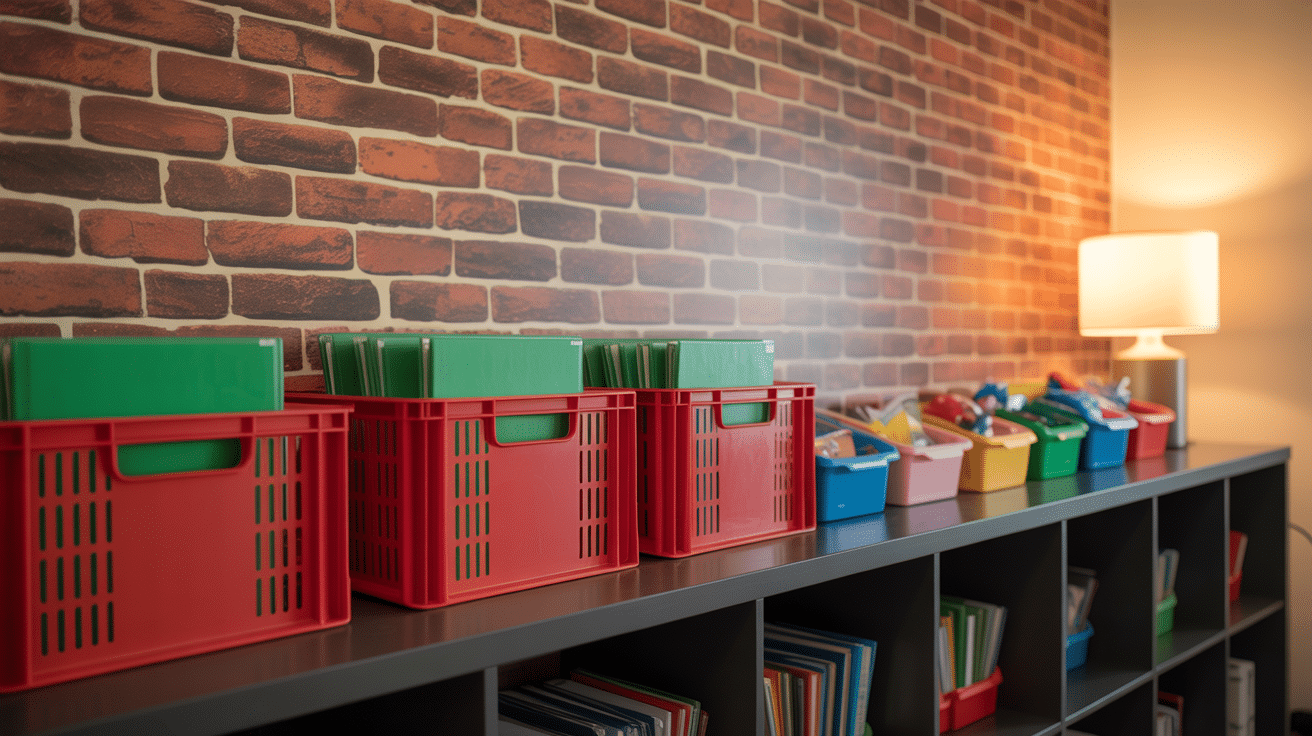
The best classroom organization ideas always start with careful preparation because rushing into changes without thinking leads to wasted time and money.
Aligning Layout with Students’ Directions:
Teachers should watch how students move around their classroom before making changes. High-traffic areas need different solutions from quiet corners.
Students with special needs might require specific accommodations. Teachers can observe for a week and note problem spots.
This simple step prevents costly mistakes and creates spaces that actually work for everyone.
Design Smarter with Layout Tools:
Many teachers sketch their classroom layout on paper first. Free online tools like Classroom Architect help visualize furniture placement.
Teachers can test different arrangements without moving heavy desks.
Digital tools show measurements and help plan storage locations. This saves time and energy while creating the most functional space possible.
Declutter, Then Design:
Smart teachers start by removing items they don’t need. Old worksheets, broken supplies, and outdated materials take up valuable space.
Teachers should sort items into keep, donate, or trash piles. This step makes organizing easier and reveals how much storage they actually need. Less stuff means more room for learning.
Top Creative Classroom Organization Ideas
Smart classroom organization ideas can change chaotic spaces into learning environments where everything has its place, and students can focus on what matters most.
1. Flexible Learning Zones
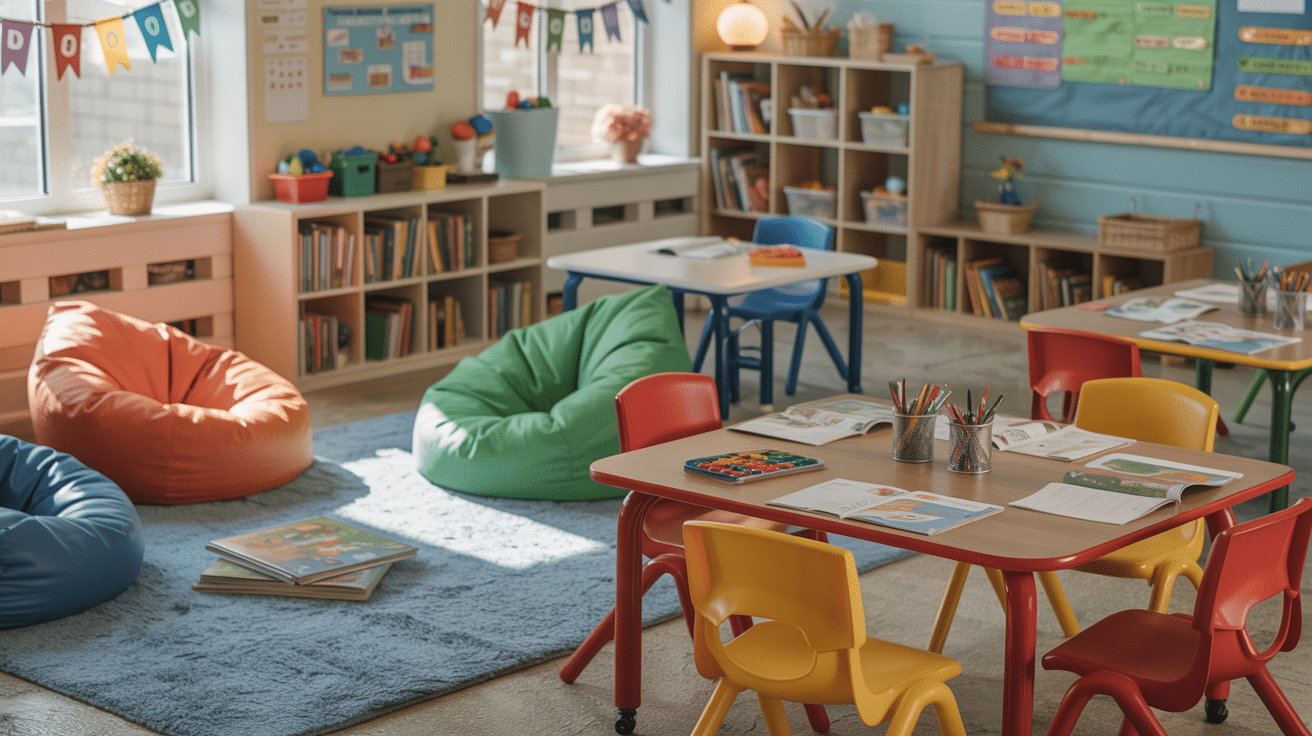
Teachers can create different areas for various activities using rugs, cushions, and movable furniture. A cozy reading corner with soft seating encourages quiet reading time.
Math manipulative stations give students hands-on learning opportunities. Science observation areas let kids examine specimens closely.
- How to add Unique Angle: Use furniture with wheels so zones can change throughout the day.
- Time-saving tip: Students help move lightweight pieces, making transitions faster.
2. Color-Coded Systems
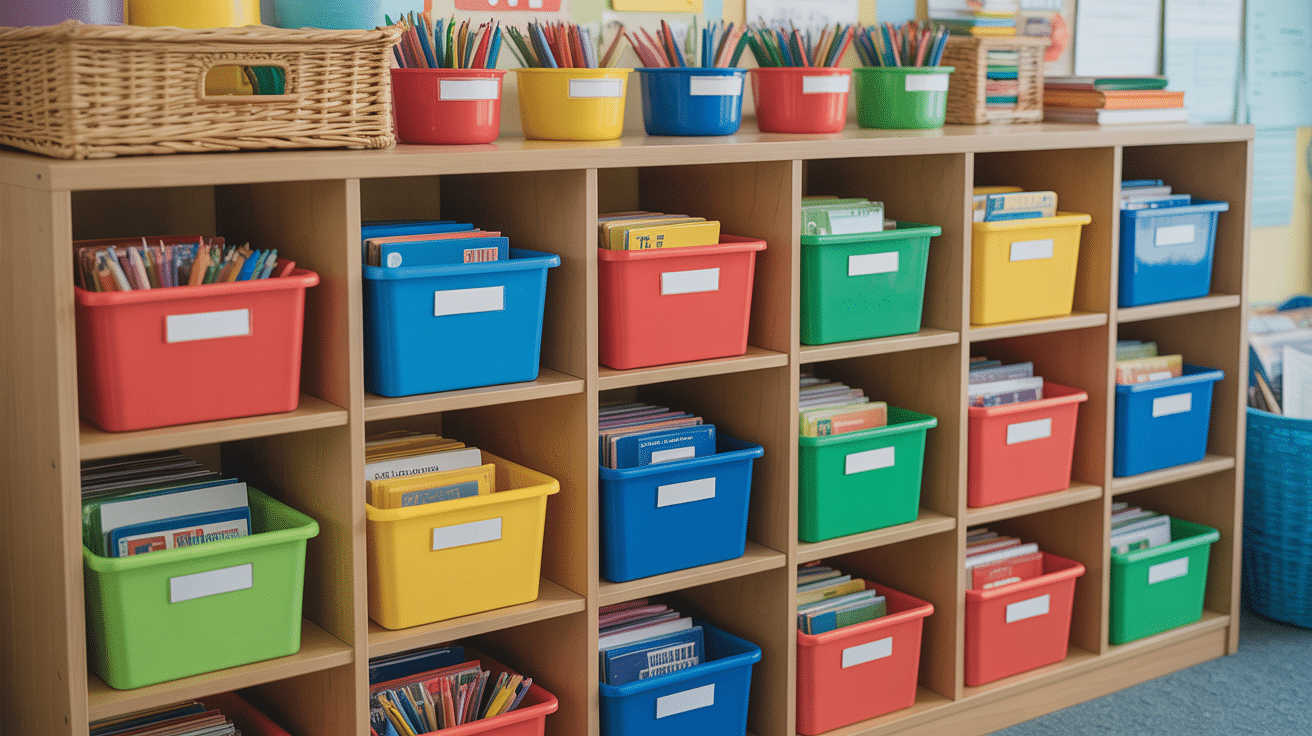
Each subject gets its own color throughout the classroom. Math materials go in blue bins, reading supplies in red containers, and science tools in green storage.
Students quickly identify what they need. This system works for folders, supplies, and even desk areas.
- How to add Unique Angle: Let students vote on which colors represent each subject.
- Time-saving tip: Students can find materials without asking the teacher for help.
3. DIY Pegboards for Wall Storage
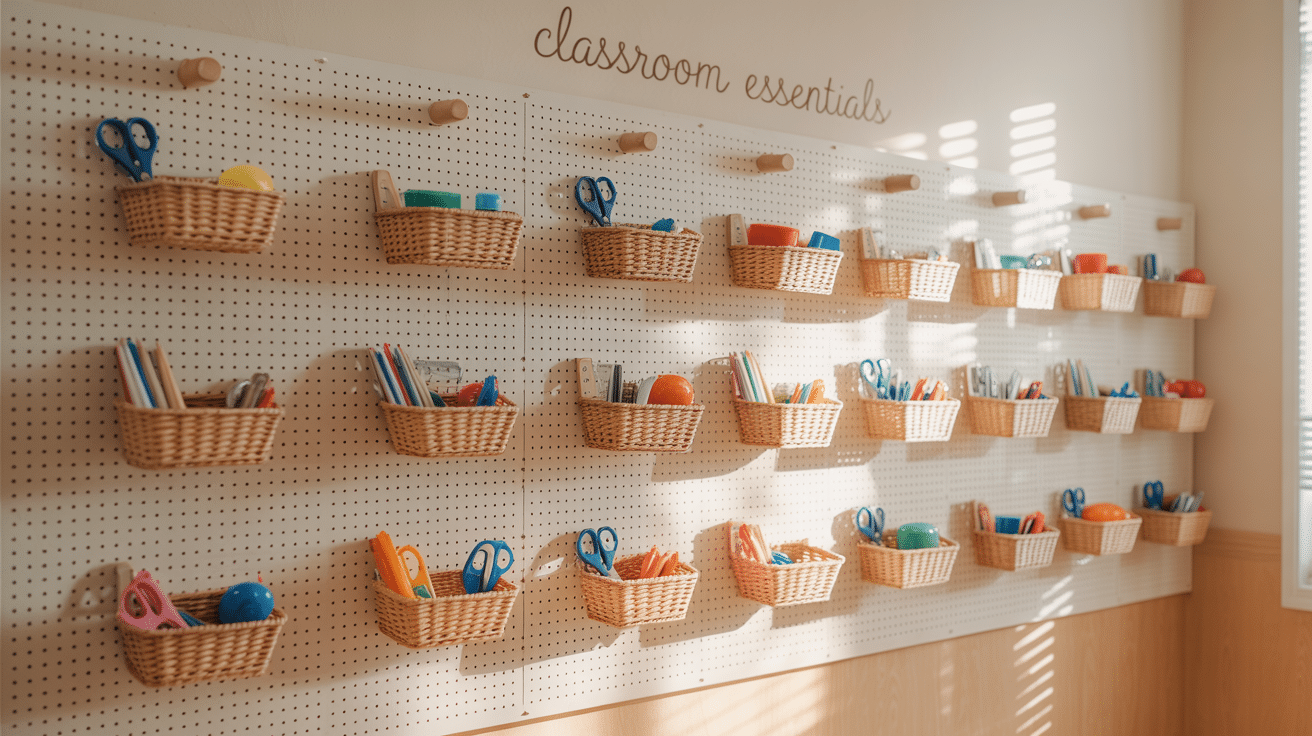
Teachers mount pegboards on walls to hang frequently used items. Scissors, staplers, and clipboards have designated spots. Students can see everything at once. This keeps supplies off desks and creates more workspace.
- How to add a Unique Angle: Paint pegboards in fun colors or add decorative borders.
- Time-saving tip: Outline each tool’s shape so students know exactly where items belong.
4. Rolling Storage Carts for Rotating Centers
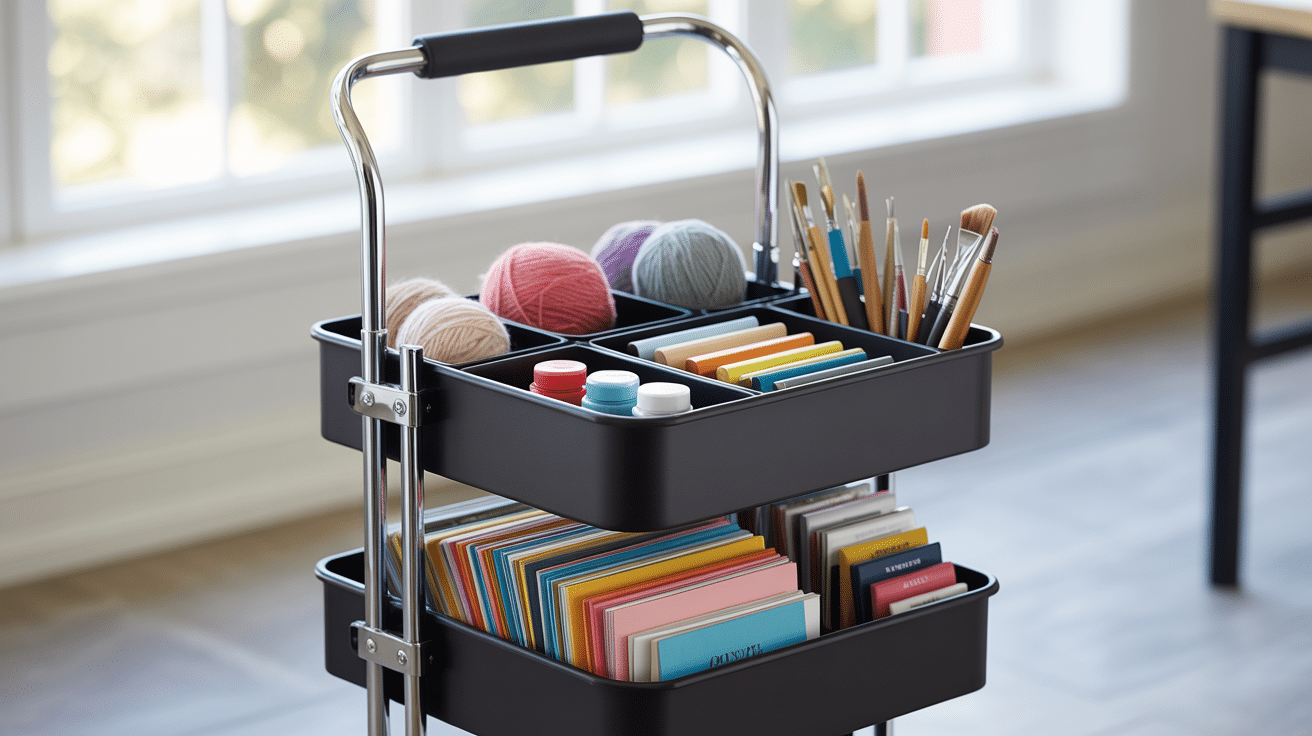
Mobile carts hold all materials for specific learning centers. Teachers can push carts to different areas as needed. Art supplies, science experiments, and math games stay organized in separate carts.
This system works especially well for teachers who share classrooms.
- How to add Unique Angle: Students can help push carts to new locations during transitions.
- Time-saving tip: Keep center instructions attached to each cart so setup is instant.
5. Under-Desk Storage Hacks
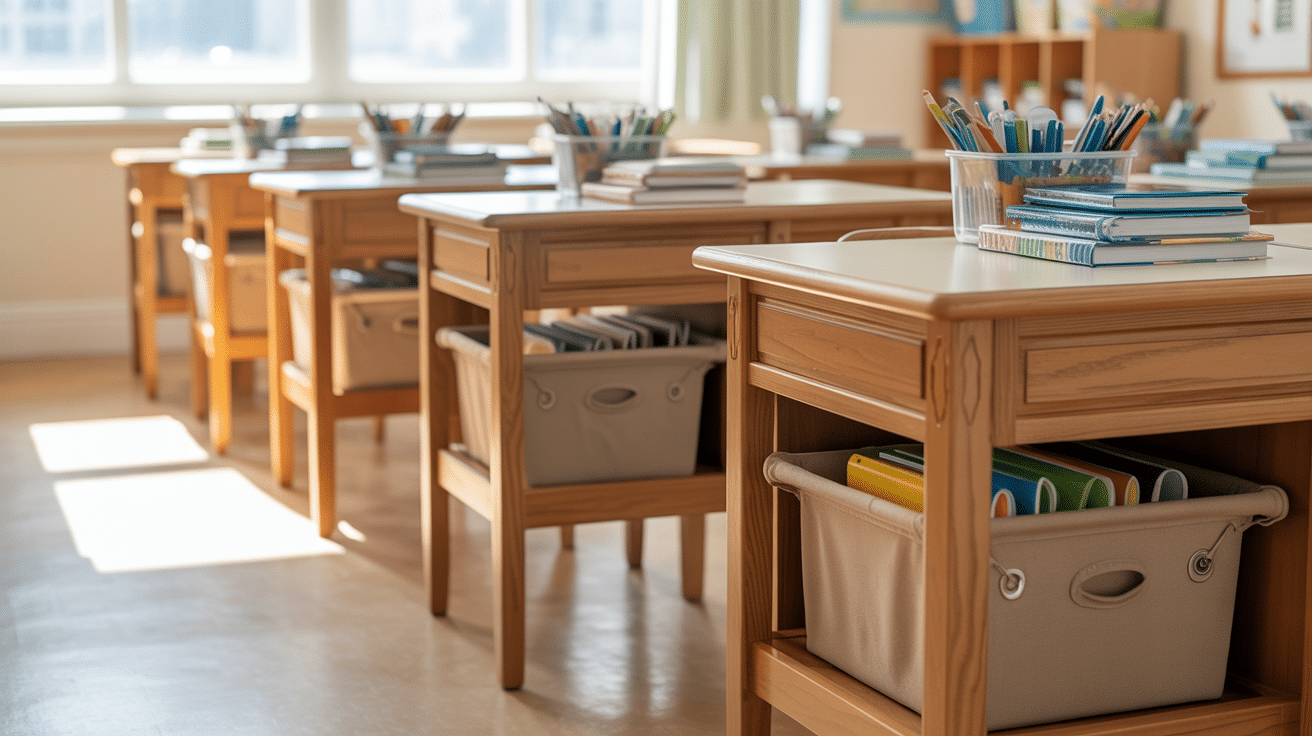
Teachers attach bins or baskets under student desks for personal supplies. Each student keeps their own materials within reach. This reduces trips to supply stations and keeps desktops clear. Simple hooks or magnetic strips work well for this purpose.
- How to add a Unique Angle: Students can decorate their personal storage containers.
- Time-saving tip: Students keep extra pencils and erasers in their own space to reduce interruptions.
6. Interactive Bulletin Boards (Rotatable or Modular)
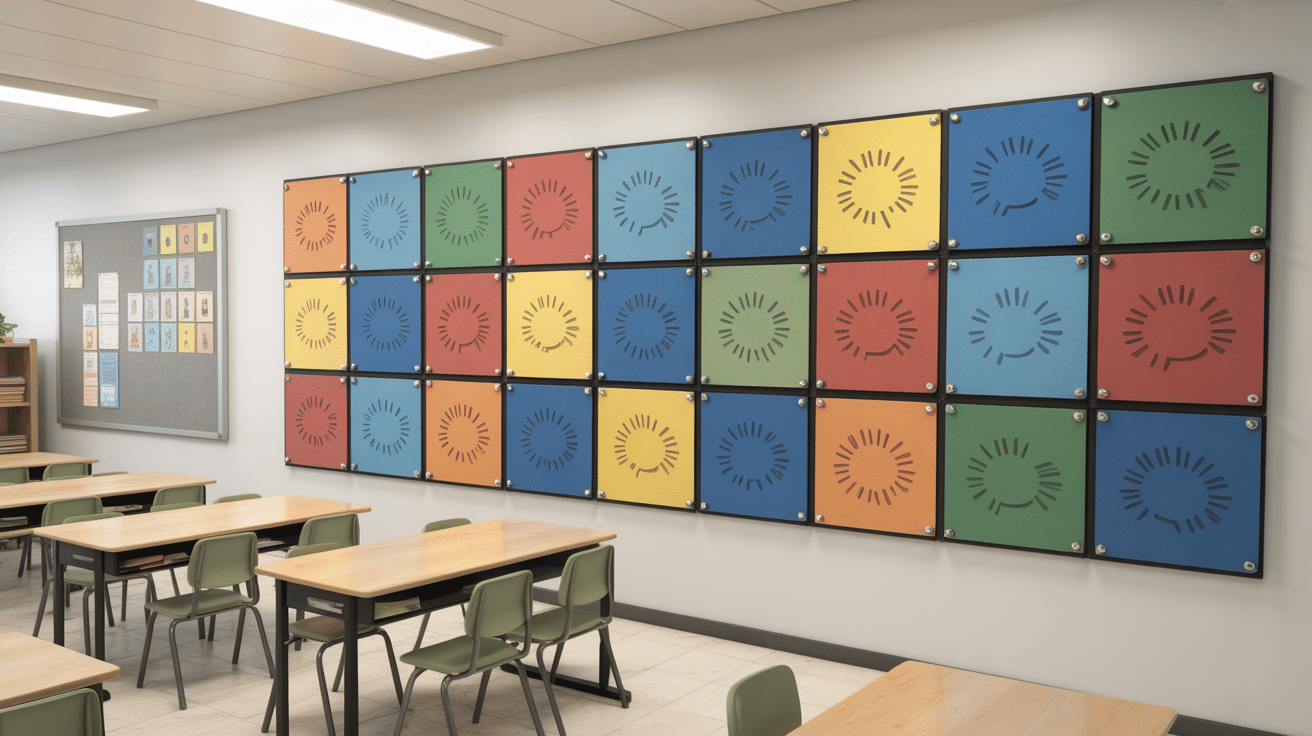
Teachers create bulletin boards with removable pieces that students can move around. Word walls with magnetic letters let students build words.
Math facts displayed with flippable cards help with practice. Science process boards show steps students can follow.
- How to add Unique Angle: Use velcro strips so students can rearrange display pieces.
- Time-saving tip: Students update boards during free time, keeping displays current.
7. Hanging Pocket Organizers for Vertical Use
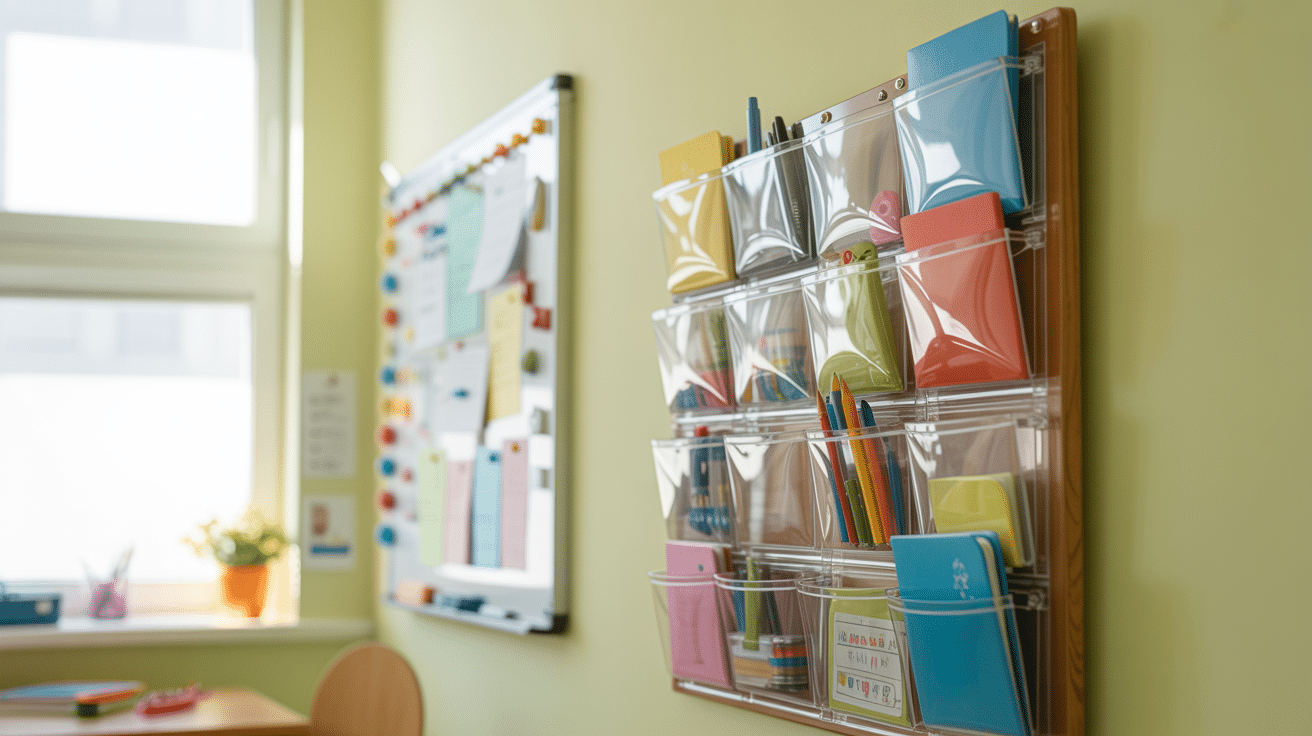
Clear pocket organizers hang on walls or over doors to hold worksheets, supplies, and student work. Each pocket serves a different purpose.
Teachers can sort materials by subject or by student needs. This system uses vertical space efficiently.
- How to add Unique Angle: Number pockets so students know exactly where to find specific items.
- Time-saving tip: Students can grab their own worksheets without waiting in line.
8. Labeling with Icons for Pre-readers
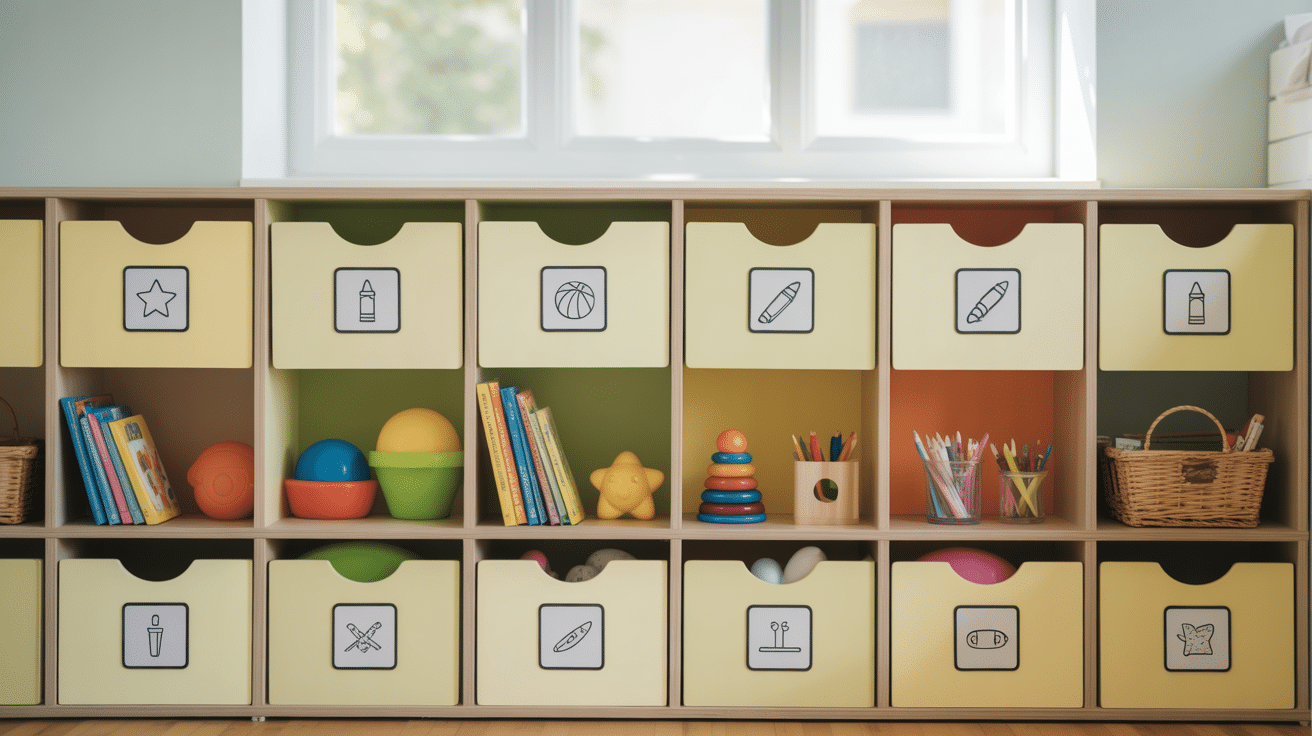
Pictures help young students identify where items belong. A crayon picture marks the crayon bin. A book icon shows where reading materials go. This system works for kindergarten through second grade. Students feel independent when they can read the pictures.
- How to add Unique Angle: Let students help create the picture labels for better ownership.
- Time-saving tip: Students can clean up without constant teacher directions.
9. Student Supply Caddies for Quick Transitions
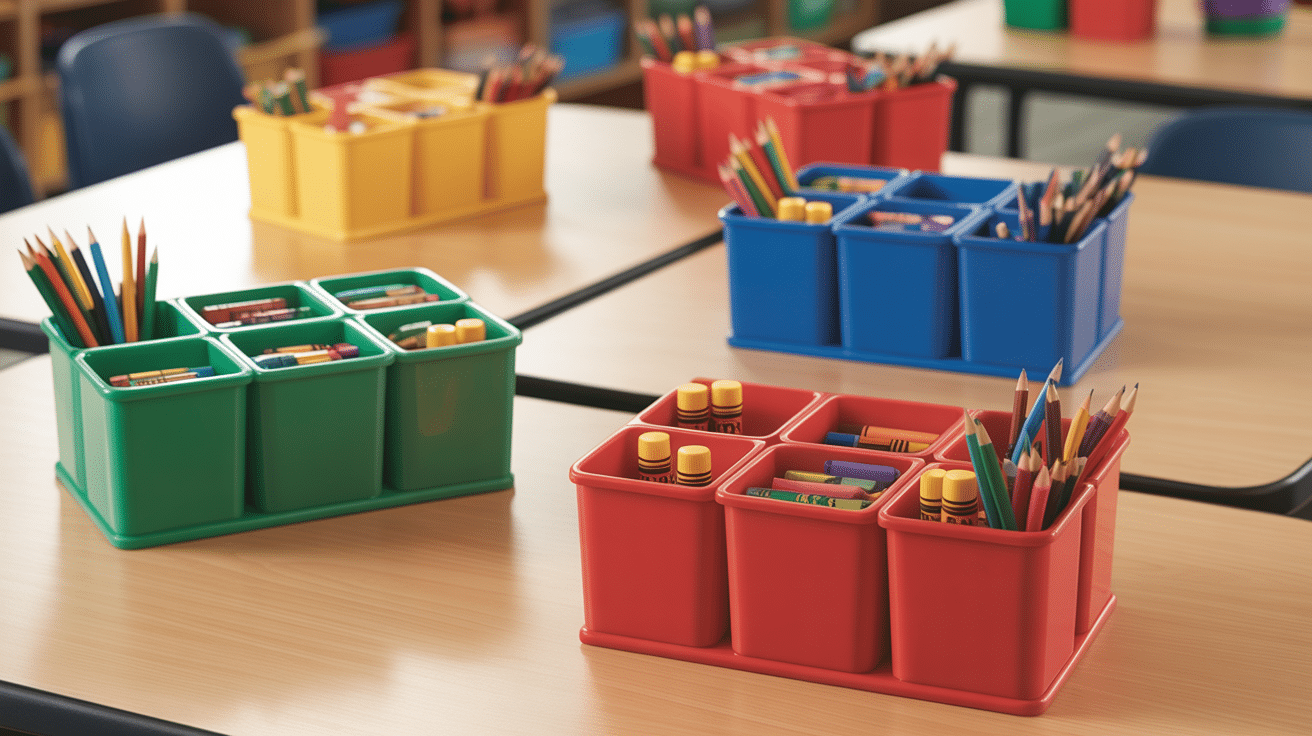
Small containers hold each student’s basic supplies like pencils, crayons, and glue sticks. Students can grab their caddy and move to any workspace.
This eliminates the need for communal supply stations. Each student takes responsibility for their own materials.
- How to add Unique Angle: Students can take caddies home for homework projects.
- Time-saving tip: No more waiting for students to gather supplies from different locations.
10. “Turn-in Towers” for Assignments by Subject or Period
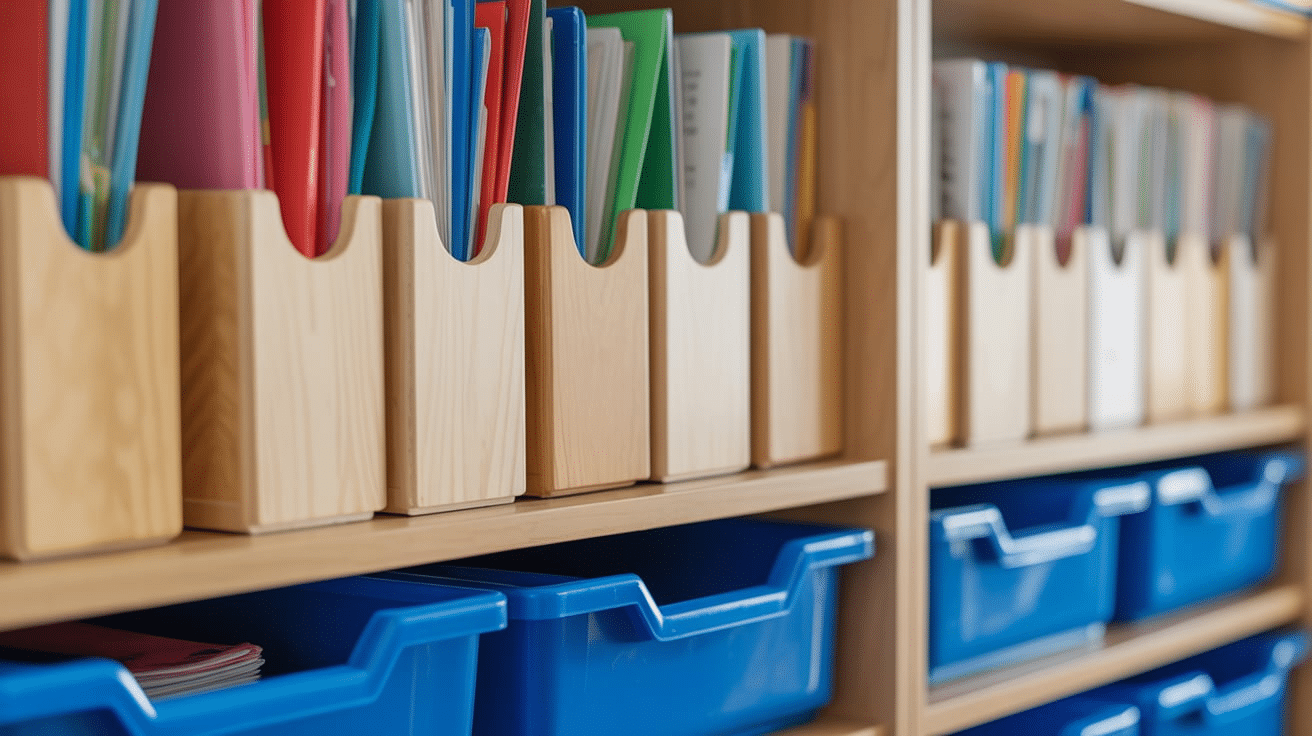
Stackable trays create towers for collecting different types of work. Each tray has a clear label for specific assignments. Students know exactly where to put completed work. Teachers can easily see what’s been turned in and what’s missing.
- How to add Unique Angle: Use different colored trays for each subject or class period.
- Time-saving tip: Teachers can quickly grab the right tray when grading specific assignments.
Small Classroom Organization Ideas for a Tidy and Efficient Space
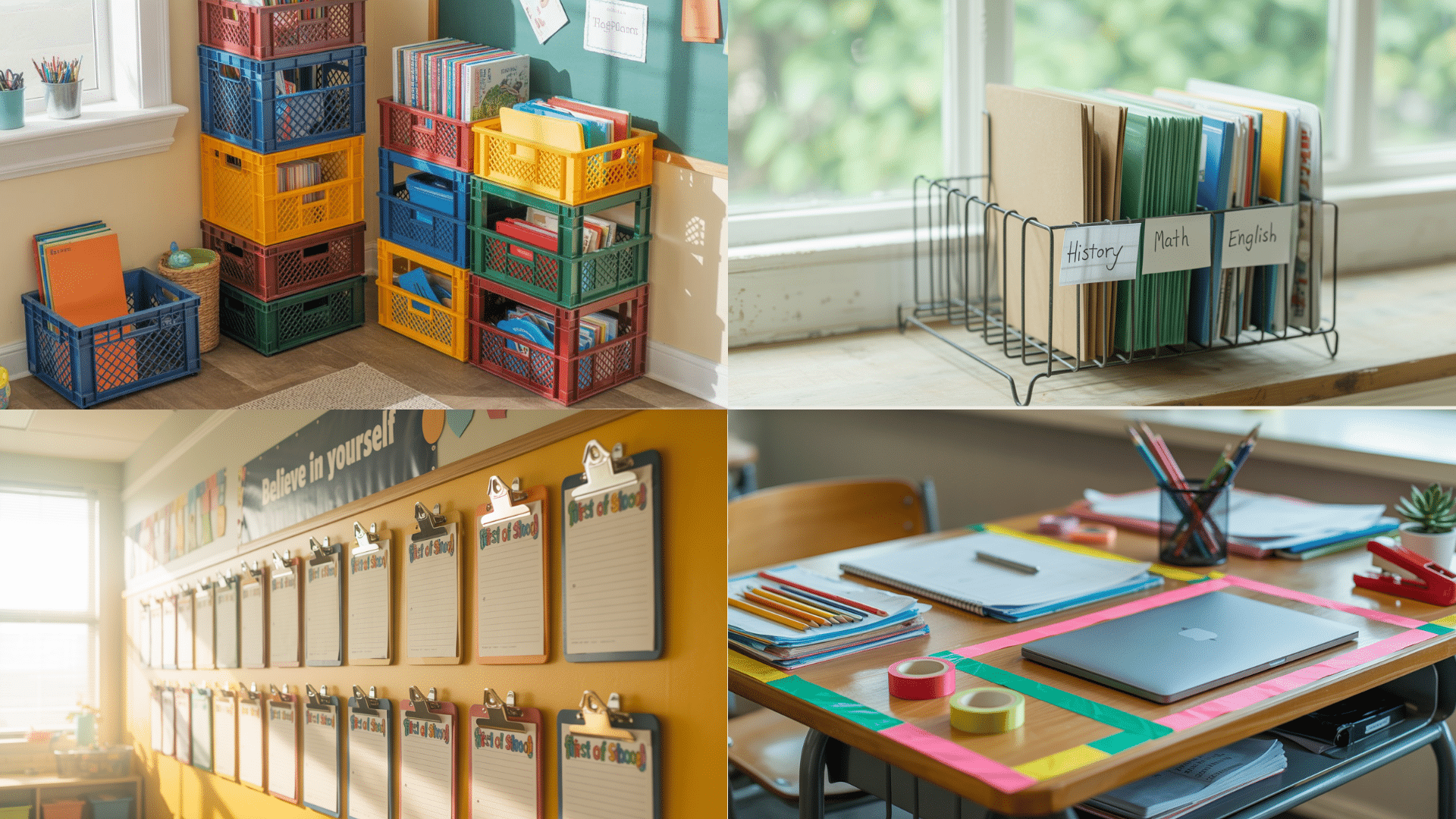
11. Use Magnetic Strips for Supplies
Teachers can stick magnetic strips on whiteboards or file cabinets to hold scissors, paper clips, and other metal items. This keeps small supplies visible and prevents them from getting lost in desk drawers.
12. Create a Lost-and-Found Basket
A small basket near the door catches stray pencils, erasers, and other items students leave behind. Teachers can quickly return items to their owners without interrupting class time.
13. Velcro Items to Desks and Walls
Teachers attach one side of Velcro to frequently used items like markers or hall passes. The other side goes on desks or walls, so these items always stay in their designated spots.
14. Designate a “No Name” Paper Tray
A labeled tray collects papers without student names, making it easy to return work to its owner. This prevents assignments from getting mixed up with other papers or thrown away.
15. Use Stackable Crates for Extra Storage
Teachers stack plastic crates or milk crates to create vertical storage towers. This system works well for storing books, folders, or seasonal supplies without taking up floor space.
16. Set Up a Fast-Finishers Station
Teachers create a designated area with puzzles, extra worksheets, or quiet activities for students who finish early. This keeps quick workers engaged while others complete their tasks.
17. Assign Classroom Jobs with a Chart
A rotating job chart with student names and tasks helps distribute classroom responsibilities fairly. Students know their weekly duties, and teachers spend less time managing daily tasks.
18. Use Binder Rings for Flashcard Sets
Teachers group flashcards by subject or skill level using large binder rings. This prevents cards from scattering and makes it easy for students to grab specific sets.
19. Color-Code Days of the Week for Routines
Teachers assign different colors to each day of the week for schedules, folders, or activities. Visual learners benefit from this system, and it helps everyone remember daily routines.
20. Keep a Cleaning Caddy Handy
A small container with wipes, tissues, and hand sanitizer sits within easy reach for quick cleanups. Teachers can address spills or messes immediately without searching for supplies.
21. Hang Clipboards for Display or Access
Teachers hang clipboards on hooks or command strips for easy access to forms, hall passes, or student work. This keeps important papers visible and prevents them from getting buried on desks.
22. Repurpose Dish Racks for Folder Sorting
Old dish racks make perfect holders for student folders or notebooks. The slots keep papers organized and upright, making it easy to find specific student work.
23. Install Tension Rods in Cabinets
Teachers place tension rods inside cabinets to hang spray bottles or small baskets. This creates extra storage space and keeps cleaning supplies organized and accessible.
24. Use Binder Clips as Cable Organizers
Large binder clips attach to desk edges to hold charging cables or headphone cords. This prevents cords from falling on the floor and keeps technology areas tidy.
25. Create a “Grab and Go” Sub Tub
Teachers prepare a container with lesson plans, class lists, and emergency activities for substitute teachers. This system ensures smooth transitions when teachers are absent.
26. Turn a Shoe Organizer into a Supply Center
An over-the-door shoe organizer holds small classroom supplies like glue sticks, calculators, or markers. Each pocket serves a different purpose, and students can see everything at once.
27. Designate a “Quiet Corner” for Reflection
Teachers set up a small, comfortable space with soft pillows and calming books for students who need a break. This area helps students reset their emotions and return to learning refreshed.
28. Use Washi Tape to Zone Desk Areas
Teachers outline specific areas on student desks with colorful tape to designate spots for supplies, papers, or devices. This visual boundary helps students keep their workspace organized.
29. Sort Manipulatives by Skill, Not Toy
Teachers group math manipulatives by their learning purpose rather than type. Counting activities go in one bin, while sorting materials go in another, making lesson prep faster.
30. Create a “Check-Out” Clipboard for Borrowed Items
A simple clipboard tracks when students borrow classroom tools like rulers or books. This system helps teachers keep track of materials and ensures items return to their proper places.
31. Rotate Bulletin Board Content Monthly
Teachers change bulletin board displays on a regular schedule to keep the classroom fresh and current. This prevents boards from becoming outdated and maintains student interest in wall content.
Teacher-Approved Organization Tips That Actually Work
Teachers have tried countless systems that looked great on Pinterest but failed in real classrooms.
These classroom organization tips have been tested by educators who know what actually works day after day, not just for the perfect photo.
- Implement a Weekly Reset Routine: Teachers spend 15 minutes every Friday putting everything back in its proper place, so Monday mornings start fresh and organized.
- Set Clear Classroom Procedures for Clean-Up: Students learn specific steps for tidying up, like “pencils in caddies, papers in bins, chairs pushed in.” Clear rules make cleanup automatic.
- Use Digital Tools for Tracking Materials and Tasks: Teachers use simple apps or spreadsheets to keep track of borrowed supplies, missing assignments, and inventory needs without paper clutter.
- Involve Students in Maintaining Order (Ownership = Accountability): When students have specific jobs like “paper monitor” or “supply checker,” they take better care of classroom materials and feel responsible for the space.
- Rotate Decor and Supplies Seasonally to Avoid Overwhelm: Teachers store seasonal items and rotate displays throughout the year, keeping the classroom fresh without creating visual chaos or storage problems.
To Conclude
These classroom organization ideas prove that creativity and practicality work hand in hand.
When teachers combine smart storage with student-friendly systems, learning spaces transform into efficient hubs where everyone grows.
The key isn’t perfection; it’s progress. Teachers can start small by trying just one new idea each week. Whether it’s color-coding supplies or creating flexible learning zones, each small change builds momentum.
Pick one strategy that speaks to you and give it a try. Remember, the best classroom is one designed with both the teacher’s needs and student success in mind.


